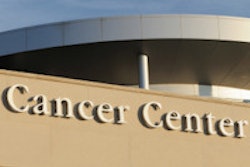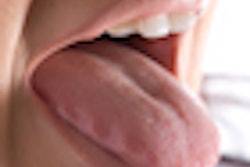
A new robotic surgical procedure offers patients with oral and head and neck cancers a less invasive treatment option that preserves speech and the ability to eat, while possibly helping them avoid radiation and chemotherapy.
Conventional treatment for these cancers usually requires a surgeon to make large incisions in the lip, jaw, and throat, which can drastically impede the ability to swallow. Chemotherapy and radiation therapy also are traditionally involved, which can take away the patient's ability to taste.
These tumors have received more attention recently with celebrities such as movie star Michael Douglas, who has stage IV oropharyngeal cancer, and film critic Roger Ebert undergoing treatment.
Now, transoral robotic surgery (TORS) -- developed by the University of Pennsylvania in 2004 using the da Vinci surgical robotic system -- is transforming the often disfiguring traditional surgery with a minimally invasive procedure and greatly decreased radiation exposure.
Surgeons use a console to guide the robot's four slender arms to access structures in the mouth not easily seen or removed in traditional transoral surgery. Compared to the traditional mandibulotomy, TORS' robotic arms allow the surgeon to access the tumor through the mouth without making incisions in the lip or mandible.
FDA-approved
In December 2009, the U.S. Food and Drug Administration (FDA) approved the use of the da Vinci robotic system to perform TORS for malignant lesions of the throat and voice box, as well as all benign disease.
Bert O'Malley Jr., MD, a professor and chairman of Penn's department of otorhinolaryngology -- head and neck surgery, invented the TORS technique with his colleague Gregory Weinstein, MD, a professor and vice chair of the otorhinolaryngology department. They have performed 450 transoral robotic surgeries since 2005.
"We used to cut down through the lip and split the jaw bone to access the back of the throat," Dr. O'Malley told DrBicuspid.com. "There was tremendous morbidity. Patients need tracheotomy tubes and feeding tubes because of the swelling. It is very devastating surgery."
— Tamer Ghanem, MD, PhD, Henry
Ford Hospital
Chemotherapy and radiation therapy were often used instead because the radical surgery was so morbid, he noted. But those therapies were also "hugely destructive," Dr. O'Malley said, often leaving patients without the ability to swallow or taste.
The main advantages to the TORS procedure include less disfigurement and better swallowing outcomes than published reports of chemotherapy and radiation therapy for oropharyngeal cancer, Dr. O'Malley said. TORS doesn't eliminate the need for radiation therapy, but it does reduce the total exposure and the amount of area that is exposed, he noted.
"There is better function and quality of life," he said.
TORS also provides a 3D surgical view with better magnification than standard approach, according to Tamer Ghanem, MD, PhD, director of head and neck oncology and reconstructive surgery at Detroit's Henry Ford Hospital, where he has performed more than a dozen TORS procedures. Also, it takes less time than the standard mandibulotomy approach, he noted.
"TORS allows me to see in 3D so I can precisely and confidently work around delicate structures," Dr. Ghanem told DrBicuspid.com. "The most difficult aspect with TORS is obtaining adequate exposure for difficult-to-reach areas, such as the base of tongue."
The most accessible sites are the tonsil region, the back of the tongue, and the supraglottis, Dr. O'Malley said.
Fewer complications
Since TORS is significantly less invasive and has a much less devastating impact on patients' ability to talk and eat, TORS has great potential, the doctors agreed.
"There usually is less blood loss, no visible scarring, and may result in fewer complications, including pain and swelling," Dr. Ghanem said.
As instrumentation becomes more refined and surgeons become more comfortable using the robotics platform, potentially larger tumors and other head and neck subsites can be addressed, according to Dr. Ghanem.
 Dr. Tamer Ghanem performs transoral robotic surgery to remove head and neck cancer tumors. Image courtesy of Henry Ford Health System.
Dr. Tamer Ghanem performs transoral robotic surgery to remove head and neck cancer tumors. Image courtesy of Henry Ford Health System.Additionally, a new study of 89 patients with head and neck squamous cell carcinoma who had transoral robotic-assisted resection surgery also showed promise for the technique. It found that an impressive 87% of the patients survived without a recurrence of cancer after two years. (Archives of Otolaryngology -- Head & Neck Surgery, December 2010, Vol. 136:12, pp. 1248-1252).
The study included patients with all stages and subsites of cancer who had the robotic surgery between March 2007 and December 2008, with a median follow-up time of 26 months. At the last follow-up visit, 11 patients had their cancer recur, including three with local recurrence, seven with regional cancer, and one with a distant cancer. Eighty-two patients had no evidence of the disease.
The two-year functional and oncologic results justify the continued treatment of select patients with head and neck squamous cell carcinoma using robotic-assisted resection surgery, wrote lead researcher Hilliary N. White, MD, of the University of Alabama at Birmingham Division of Otolaryngology -- Head and Neck Surgery, Department of Surgery.
Dentists can play a key role in catching the disease in its early stages if they check for it during examinations, but many dentists think it's such a rare disease that they often don't bother to screen for it.
About 36,000 new cases of oral cancer are diagnosed each year in the U.S., according to the ADA, and some 25% of those people will die of the disease. In the last decade, the demographics of oral cancer have changed dramatically, according to cancer experts, pointing to the sexual revolution and an accompanying increase in the prevalence of oral sex. Today, almost half of those diagnosed with the disease are younger than 50 years old -- with some as young as 20 -- and they are usually nonsmokers. The incidence in oral cancer patients younger than age 40 has increased nearly fivefold, with many patients with no known risk factors, according to the ADA.
Copyright © 2011 DrBicuspid.com



















